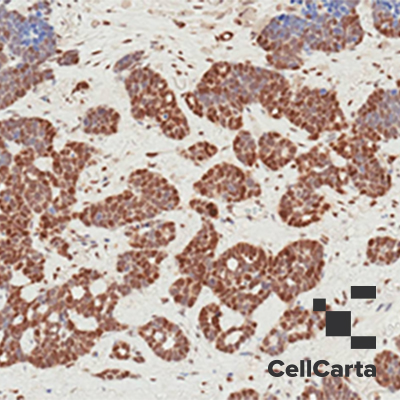
Test Description
The SMAD protein family transduce signals and are transcriptional modulators which mediate multiple signaling pathways. There are three types of SMAD proteins: receptor-regulated SMADs (SMAD1,2,3,5, and 8), the common-mediator SMAD (SMAD4), and inhibitory SMADs (SMAD6 and 7). SMAD2 mediates the extracellular signal of transforming growth factor (TGF)-β to the nucleus, regulating cellular processes such as differentiation, cell proliferation, and apoptosis. SMAD2 is an intracellular signal transducer and transcriptional modulator activated by TGF-β and activin type 1 receptor kinases. The activin type 1 receptor kinase, TGF-β receptor 1, phosphorylates receptor-regulated SMAD2 on a conserved Serine-Serine-Methionine-Serine motif, Ser465/467. The phosphorylated SMAD2 then forms a heteromeric complex with the common mediator SMAD, SMAD4, which allows the complex to translocate to the cell nucleus. Once in the nucleus, the complex binds DNA and regulates gene transcription.